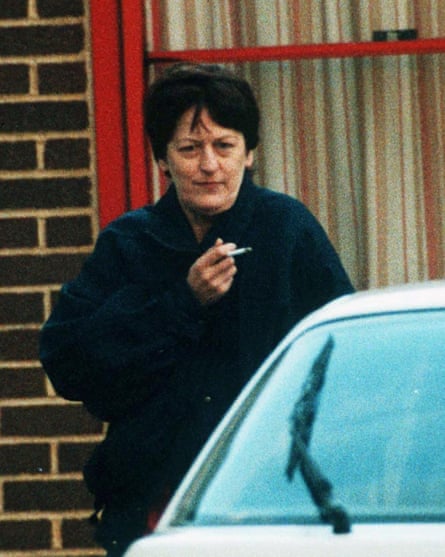One of the most surprising statements my father made, during his long life as a newspaper editor, philanthropist and human rights campaigner, was contained in a private letter to Myra Hindley, the infamous “Moors murderer”. Writing in September 1990, he compared her imprisonment to that of another friend, Nelson Mandela, who had recently been set free after 27 years in jail. Mandela was fast becoming the most revered person in the world, while Hindley was probably still the most hated woman in Britain. She had by then served almost 25 years of an indeterminate sentence with virtually no prospect of release.

In trying to understand what lay behind this apparently strange and initially shocking comparison, I have come to realise that it was far from being an aberration on my father’s part. In fact it exemplifies a principle that underpinned much of the work for which he became widely admired.
Although it would be easier to gloss over his friendship with Hindley and his conviction that she had a right to go free – which many still see as the folly of an unrealistic, ageing aristocrat – I feel that would be an injustice both to him and to his strongly held beliefs.
What follows is a paragraph of advice from my father to Hindley which some are bound to find distasteful, as even a few of his admirers have done: “You are bound to find the next period of time very trying. I feel it impertinent to offer you any advice on this. But I hope you will allow me to say that you have already made an astounding achievement which I think is seriously comparable to that of Nelson Mandela. His case was easier than yours in that he started on high moral ground as a freedom fighter and his problem was to maintain that attitude through thick and thin. You began in a deeply confused situation and had to establish your own moral basis and from that basis build yourself up.”
Mandela wrote that he had learned much of value through enduring long, harsh years of imprisonment. My father came to believe that something comparable could be said of Hindley, after many conversations during frequent prison visits accompanied by my mother: that she was only able to survive the last arguably illegal decade or so of her imprisonment because she too had been able to increase the strength of her character in adverse and challenging circumstances.
Like everyone else in the mid-1960s, my father was appalled by Hindley’s horrific crimes when they were first reported – and so he remained. But by 1990 he had come to believe that Hindley had not only genuinely repented of her crimes but that she had, in effect, become a political prisoner. As with Mandela, it was the decisions of politicians rather than the judicial system that were keeping her in jail. Over the next decade he campaigned vigorously but in vain for her release, incurring some of the same public mockery and private vitriol previously dealt to his old friend Frank Longford, whose place he had taken as champion of her case.
As a teenager, Hindley was seduced by a sadistic psychopath, Ian Brady, with whom she became infatuated. Between 1963 and 1965, she helped him brutally murder five children. She stood beside him at their trial, and even after they had been separated by incarceration found it difficult to break free of his psychological hold. Throughout her years in prison, no serious evidence was presented to suggest she remained a danger to the public. The goalposts through which freedom is usually attained were, in her case, repeatedly moved. She died in jail aged 60. At the time of the trial and long afterwards, the tabloid papers stoked hostility towards Hindley, and many factors contributed to their vehemence. She and Brady were arrested just a month before the abolition of capital punishment but they were only sentenced half-a-year later, leaving a general impression that she had somehow cheated the gallows.

That Hindley was a woman – a potential mother – and that the victims were so young (between 10 and 17) also gave her crimes a particular horror. Finally, during her parole hearing, she did not break down or abase herself in the way many wanted to see, provoking a sense that she had been insufficiently punished and allowing newspapers to fuel further hatred among their readers. As a result, a series of home secretaries of both main parties, who at that time were ultimately responsible for overseeing the justice system, found it politically prudent to treat Hindley’s case differently from those of other life-sentenced prisoners. Her earliest potential release date was set at 25 years, then extended to 30 years, and it was finally decided that she should remain in jail for the rest of her life. Her incarceration therefore ended up lasting an exceptional 37 years, and it was only her death, in 2002, that stopped it from being even longer.
Hindley’s situation had changed from rightful punishment for heinous crimes to wrongful imprisonment “by popular demand”. The effect was to override a fundamental principle of our society, which states that only judges (not newspapers, elected politicians or popular opinion) can decide how long a person remains in prison. It was in defence of this principle – a crucial safeguard against mob-rule –that my father acted and argued during his support of Hindley’s case. By understanding this, I came to share his disquiet and admire his decision to defend that principle in the face of the most extreme and emotionally charged response.
He campaigned against many institutionalised injustices over the course of his long life. But his experiences before and during the second world war led him to become especially watchful against the easy complacency and reflex hatred that had guaranteed its worst atrocities. As a teenager in Germany in 1931, he had witnessed the success of Nazi propaganda and the beginnings of Hitler’s rise to power. He had seen how mass hatred can be invoked via demonisation.
The two types of campaign that he came to support most passionately focused on exactly that type of orchestrated demonisation, whether of groups or individuals, and on unjust imprisonment. Sometimes these causes coincided, as they did when he helped to start Amnesty International, and during his support of Mandela throughout his long imprisonment. Nowadays, the idea of Mandela being characterised as demonic is almost unthinkable, but when he was first imprisoned even Amnesty refused to support him. Because Mandela advocated violence against South Africa’s Apartheid regime – which in turn represented him as a dangerous terrorist – he was a problematic person for Amnesty to champion.While there is no analogy between either apartheid or Nazism and the various British governments that imprisoned Hindley, I feel my father was right to recognise the omnipresent potential for the generation of mass hatred via demonisation. In his excellent new biography, David Astor: A Life in Print, Jeremy Lewis quotes my father as remaining “haunted by what Hitler showed to exist in all us ordinary people”, and convinced that “it is always unwise to regard any person or persons as demons”. Lewis concludes that it was Hindley’s demonisation by the tabloid press that persuaded my father to take up her cause.
From the frenzied perception of Hindley as some sort of monster it was a short step to the illusion that our children would be safer if she was kept locked up. The truth, however, is that an average of two children die every week in the UK at the hands of their parents or carers, compared to an average of five each year who are murdered by strangers. Could it be that excessive focus on an infamous child killer for 37 long years may have diverted attention from the urgent need to tackle everyday cruelty to children in our communities and family homes?
